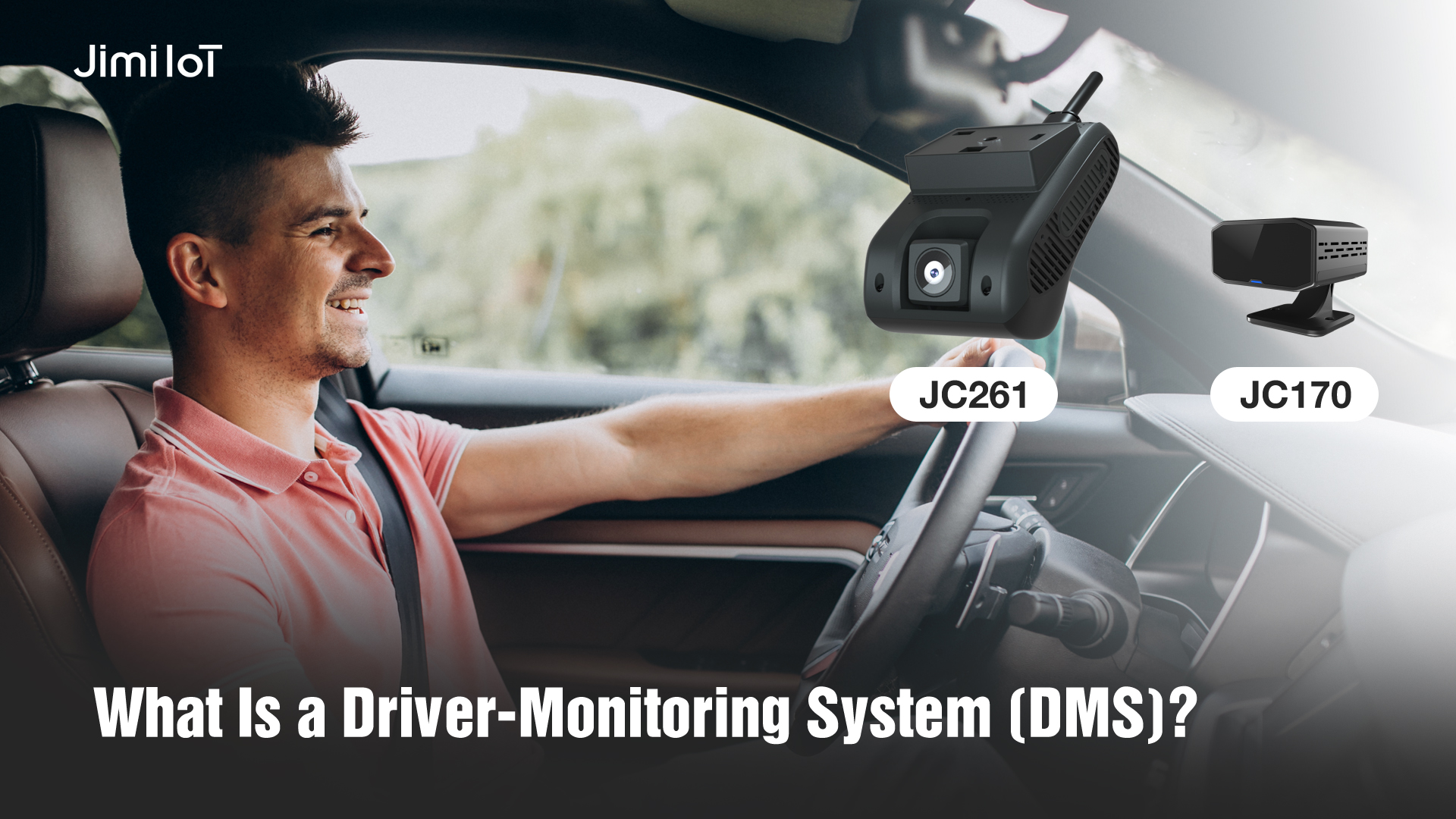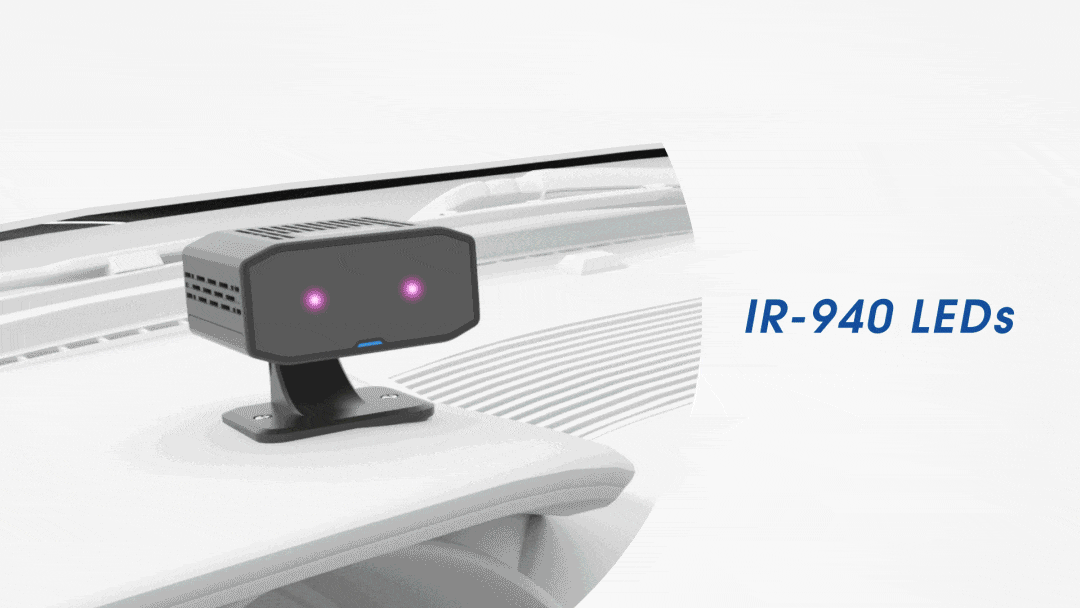Introduction
A Driver Monitoring System (DMS) is an advanced safety technology designed to enhance road safety by monitoring the driver’s alertness and attention levels in real time. These systems utilize cameras, sensors, and artificial intelligence to continuously assess the driver’s behavior, such as eye movements, head position, and facial expressions, to detect signs of fatigue, distraction, or other impairments. As a core component of Advanced Driver Assistance Systems (ADAS), DMS technologies are increasingly integrated into modern vehicles to promote safer driving, particularly in commercial fleets where safety is paramount.

The Role of Driver Monitoring Systems
The primary function of a DMS is to ensure the driver remains attentive and fully capable of controlling the vehicle. These systems employ various sensors, typically infrared cameras, to monitor critical indicators such as:
- Eye Movements: Tracking the driver’s eye movements and blink rate can detect drowsiness or distraction.
- Head Position: Monitoring head position helps identify if the driver is looking away from the road.
- Facial Expressions: Certain facial cues can signal the driver’s emotional state, alertness level, or potential impairment.
When the DMS detects a reduction in driver alertness, it immediately triggers alarms or suggestions, such as taking a break. In more advanced systems, the vehicle can intervene by reducing speed or taking other preventive actions if the driver doesn’t respond promptly.
Why Driver Monitoring Is Essential for Fleet Management
For businesses managing fleets, driver monitoring is not just a safety tool but a business-critical function. With growing adoption of semi-autonomous driving systems, there is an increased risk of driver disengagement, where drivers may rely too heavily on automation. DMS acts as a safeguard, ensuring the driver remains attentive and capable of retaking control when necessary.
Moreover, fatigue remains one of the leading causes of road accidents globally. DMS technologies play a vital role in mitigating these risks by detecting early signs of tiredness and prompting drivers to take corrective action.
For fleet operators, this directly translates into fewer accidents, lower insurance costs, and improved vehicle uptime, enhancing both operational efficiency and safety.
Key Features of a Robust Driver Monitoring System
An effective DMS must reliably detect signs of driver impairment or inattention under various conditions. To achieve this, modern systems are equipped with:
- Infrared Cameras: These enable the system to function in low-light conditions, such as nighttime driving.
- Advanced AI Algorithms: By continuously learning from driver behavior, these systems become more adept at distinguishing between normal and risky driving patterns.
- Integration with Other Systems: A fully integrated DMS can communicate with other vehicle systems, such as adjusting seat or steering wheel vibration to alert the driver of potential danger.
These capabilities are essential for commercial fleets, where prolonged driving hours and monotonous routes increase the likelihood of driver fatigue. Jimi IoT offers advanced DMS solutions tailored to commercial vehicles, providing fleet operators with real-time data on driver behavior and vehicle performance.
The Impact of DMS on Road Safety
Human error remains a significant contributor to road accidents. A large percentage of these incidents are caused by driver distraction, drowsiness, or impaired attention, which are directly addressed by DMS technology. Implementing driver monitoring in fleet vehicles helps reduce these risks by ensuring the driver is always aware and engaged in their driving task.
For commercial fleets, the benefits of DMS are substantial:
- Accident Reduction: Fleet vehicles equipped with DMS experience fewer accidents due to timely alerts and interventions.
- Cost Efficiency: Fewer accidents lead to lower insurance premiums, repair costs, and downtime, contributing to overall cost savings.
- Enhanced Driver Accountability: The presence of DMS promotes safer driving habits, as drivers are aware they are being monitored.
Jimi IoT Driver Monitoring and Fleet Management Solution
Jimi IoT offers a comprehensive driver safety and fleet management solution by combining the JC170 DMS AI Camera with the JC261 4G Dash Camera.
The JC170 DMS AI Camera monitors driver behavior in real-time, using advanced AI to detect fatigue or distractions and issuing instant audible alerts to help prevent accidents. This device ensures that drivers stay attentive, especially during long hours behind the wheel.
Paired with the JC261 4G Dash Camera, which provides multi-channel video recording, live streaming, and video playback, the solution enables fleet managers to monitor both road conditions and driver behavior simultaneously. The JC261’s 4G connectivity ensures seamless access to real-time data, allowing for better decision-making and improved safety measures.
The Future of Driver Monitoring Systems
The future of DMS technology is bright, with significant growth expected over the next few years. In 2022, the global market for DMS was valued at approximately USD 880.69 million, and by 2028, it is projected to reach USD 1404.19 million, growing at a compound annual growth rate (CAGR) of 8.09%. Several factors are driving this growth:
- Stricter Safety Regulations: Increasing regulatory support for vehicle safety measures, particularly in the EU and North America, is encouraging automakers to incorporate DMS in new models.
- Rise of Autonomous Vehicles: As the automotive industry advances towards higher levels of autonomy, ensuring the driver’s ability to take control during emergencies becomes critical, further boosting the demand for DMS.
- Technological Advancements: Innovations in artificial intelligence (AI) and machine learning (ML) are enhancing the capabilities of DMS, making them more accurate and efficient at detecting risky behaviors.
Benefits of Driver Monitoring Systems for Fleets
For fleet operators, the adoption of DMS delivers numerous advantages:
- Enhanced Safety: DMS significantly reduces the likelihood of accidents by ensuring drivers are attentive and alert.
- Operational Efficiency: DMS simplifies driver performance monitoring, providing actionable insights without the need for manual reviews.
- Cost Savings: By encouraging safer driving habits, DMS helps reduce vehicle wear and tear, fuel consumption, and insurance costs.
- Valuable Data Insights: The data collected by DMS can be used to optimize routes, improve driver training, and enhance overall fleet management.
- Regulatory Compliance: DMS technology helps fleets stay ahead of evolving safety regulations, minimizing the risk of non-compliance and potential liabilities.
Conclusion
Driver Monitoring Systems are becoming indispensable in promoting road safety and ensuring responsible driving, especially for fleet operators. Jimi IoT’s innovative DMS solutions provide businesses with the tools they need to reduce accidents, improve operational efficiency, and lower costs. With the market set to expand rapidly in the coming years, adopting advanced DMS technology is not just a safety measure—it’s a strategic advantage for any business relying on fleet operations.
Why JimiIoT
JimiIoT is a global leader in innovative IoT solutions. We provide cutting-edge hardware and software tailored to enhance efficiency and connectivity. Our range of products includes advanced GPS tracking devices, asset management solutions, smart vehicle dashcams, and telematics platforms. With a focus on technological excellence and customer satisfaction, we empower businesses to optimize operations and gain valuable insights from data-driven analytics. Trust JimiIoT to drive positive change and unlock growth opportunities in the digital age.
If you would like more details, please visit Facebook, LinkedIn, INS, and Twitter pages for further information.




